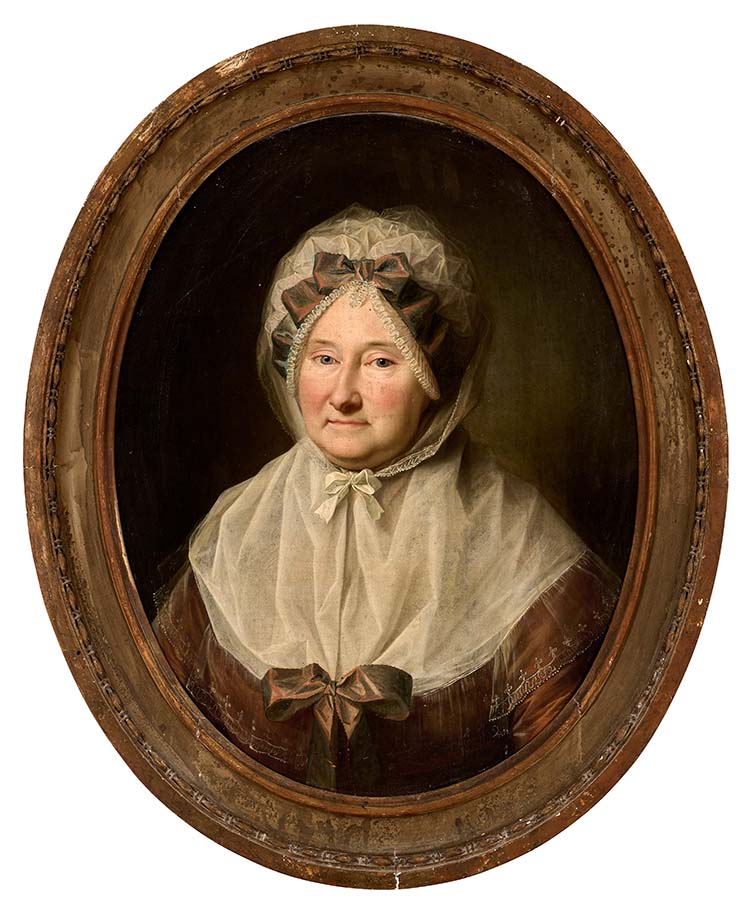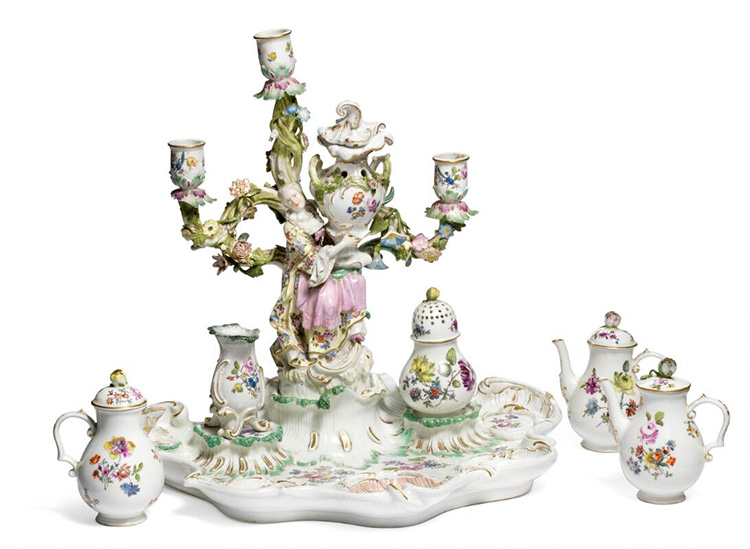
From Auction House to Museum
Going, going, gone … sold to the gentleman on the back row! We’re all familiar with the expression used by the auctioneer to indicate the acceptance of a final bid for an item in Lyngby. The works of art and design classics at our auctions are often purchased by a Danish or international museum or cultural institution. A Jens Juel portrait was recently acquired at our Live Auction of Fine Art by the Larvik Museum (Norway).
Museum acquisitions are frequently treasures procured with the support of a foundation or private donors, and which deserve to be displayed in a setting accessible to the public. The portrait of the 74-year-old Anna Joachima Danneskiold-Laurvigen, née Ahlefeldt (1717–1795), in a brown silk dress, white bonnet and white fichu is no exception. It was acquired at the Live Auction in March as part of a planned recreation of the ancestral gallery at the High Residence of the Count in Larvik.
“A large part of the drive and passion in my work comes from passing on old art to new owners who will appreciate them again. Many of these new owners are museums, and a big part of our work at Bruun Rasmussen involves letting museums know when a painting that could be of interest to their collection comes up for auction. It’s always a source of great joy and satisfaction when a museum acquires a painting.”
Julie Arendse VossSpecialist in Fine Art at Bruun Rasmussen
Jens Juel and the Social Elite
The portrait of Anna Joachima Danneskiold-Laurvigen, painted by Jens Juel in 1790–1791, is a distinguished representation of the elderly countess and a work which testifies to Denmark’s best portrait painter’s mastery of the human being and materiality. As an artist, Jens Juel mastered virtually all genres of painting, but in the latter half of the 18th century, he began to focus mainly on painting portraits of representatives of the social elite. From early on in his career, Juel received significant commissions from the Danish court, and he would go on to become the painter of choice of the Danish nobility. He also received many commissions from the bourgeoisie of the flourishing era, as evidenced by the abundant help the master received from his own students in the large-scale production of paintings at his atelier, especially during the 1780s and 1790s. Juel used a vivid colour palette in his portraits, which show his skill at reproducing different materials, such as lace and fur. The same portrait, but in full length, is exhibited at the National Gallery of Denmark.

|
Norwegian Connections
Anna Joachima Danneskiold-Laurvigen is probably best known for having had the neoclassical main building built on the Skjoldenæsholm estate near Ringsted. But she had a close connection to Norway. Count Frederik Ludvig Danneskiold-Laurvig (1717–1762) was a Danish officer. He owned the County of Laurvig (Larvik in Norway). The young count spent a lot of time at the royal court. He advanced through the military ranks and received many royal favours from King Frederik V. In 1744, he married Anna Joachima Ahlefeldt, who, as one of Queen Sophie Magdalene’s ladies-in-waiting and the daughter of Privy Councillor Hans Adolph Ahlefeldt, also received the prestigious royal order “de l’Union parfaite”. A fairly significant foundation, Larvik Hospital, was rebuilt and expanded by the Danneskiold-Laurvigs.
“Vestfoldmuseene is a regional museum, with a department called Larvik Museum. The manor house in Larvik was the residence of Ulrik Frederik Gyldenløve (1638–1704) and the later counts in the county of Larvik (Laurvigen). We are in the process of restoring the main building and also hope that we will be able to recreate the garden that once belonged to the house. We are therefore trying to build up the portrait gallery which once belonged to the house. Our museum is delighted with the acquisition!”
Aina AskeProject Manager Akantus/Conservator NMF – Larvik Museum/Vestfoldmuseene
The County and Manor House in Larvik
The role as the county’s town of residence gave Larvik a special history and distinctive architecture. The manor house in Larvik, or the High Residence of the Count, was built by Viceregent and Count Ulrik Frederik Gyldenløve between 1674 and 1677. The two counties in Vestfold, Laurvigen and Griffenfeld (later Jarlsberg) were established in 1671 and 1673 respectively. The counties had close connections to the king and exerted a great influence on the development of society and culture. The manor house in Larvik, where the portrait of Anna Joachima Danneskiold-Laurvigen now hangs, is one of the most important cultural monuments in Norway from the 17th and 18th centuries. We congratulate Larvik Museum with their newest acquisition.

Museum Acquisitions
For further information, please contact
|
|
Julie Arendse VossJulie Arendse VossHead of department / 19th Century & Old Master Paintings / København |
|
|
Birte StokholmBirte StokholmSpecialist / 19th Century & Old Master Paintings / København |
|
|
Søren Kjerk HolmstrupSøren Kjerk HolmstrupSpecialist / 19th Century & Old Master Paintings / København |
|
|
Sofie Normann ChristensenSofie Normann ChristensenSpecialist / 19th Century & Old Master Paintings / København |
|
|
Camilla Bruun StoltzeCamilla Bruun StoltzeSpecialist / 19th Century & Old Master Paintings / København |
|
|
Kristine VindahlKristine VindahlSpecialist / 19th Century & Old Master Paintings / København |
|
|
Nick MessmannNick MessmannSpecialist / Fine Art / Aarhus |